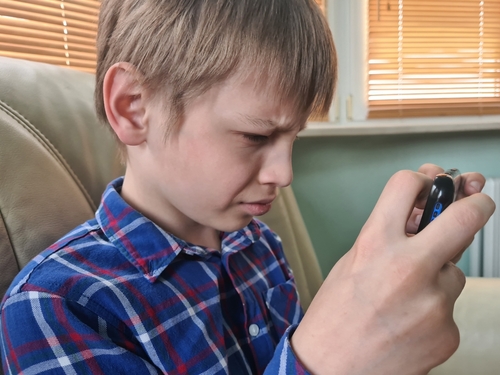
Recent research highlights a meaningful connection between screen use and nearsightedness (myopia) in children and teens. Here's what parents and eye care professionals should know:
1. Every Additional Hour ↑ Myopia Risk by ~21%
A comprehensive review of 45 studies (over 335,000 participants) found that each extra hour of daily screen use increases the odds of myopia by 21 percent. The risk climb is steepest from 1 to 4 hours of daily screen time, nearly doubling by 4 hours.
2. Safe-Screen Threshold? Aim for < 1 Hour Daily
Data shows minimal added risk below 1 hour per day. Risk climbs quickly up to 4 hours, then begins to plateau. While this “safe” level may be difficult in our digital world, it gives clinicians and families a realistic benchmark.
3. Not Just About Screen Time
Other factors play a role:
- Near focusing (reading, studying) contributes
- Outdoor exposure is protective — 1–2 hours/day in natural light can lower myopia risk
- Device type matters: Desktop/laptop use shows stronger association with myopia than smartphones
4. Why Outdoor Time Works
Sunlight boosts retinal dopamine, which helps limit eyeball elongation—a key driver of myopia. Nations like Taiwan have even launched public health campaigns promoting 2 hours of daily outdoor time for schoolchildren, which has helped reduce rising myopia rates.
5. What Parents & Eye Care Providers Can Do
- Monitor screen time: Encourage breaks—think the 20‑20‑20 rule (every 20 minutes, look 20 feet away for 20 seconds).
- Promote outdoor play: 1–2 hours of daily daylight is strongly protective.
- Balance near work: Incorporate breaks and posture checks during reading and homework.
- Be selective about devices: Laptops/desktops have a greater impact—limit nonessential use.
- Ensure regular eye exams: Early detection allows for options like low-dose atropine, ortho-k lenses, or multifocal lenses to slow progression.
In Summary
- +1 hour/day screen time = +21% myopia odds
- Fastest risk increase between 1–4 hours/day
- Under 1 hour/day screen + 1–2 hours of outdoor activity = best chance to protect young eyes









